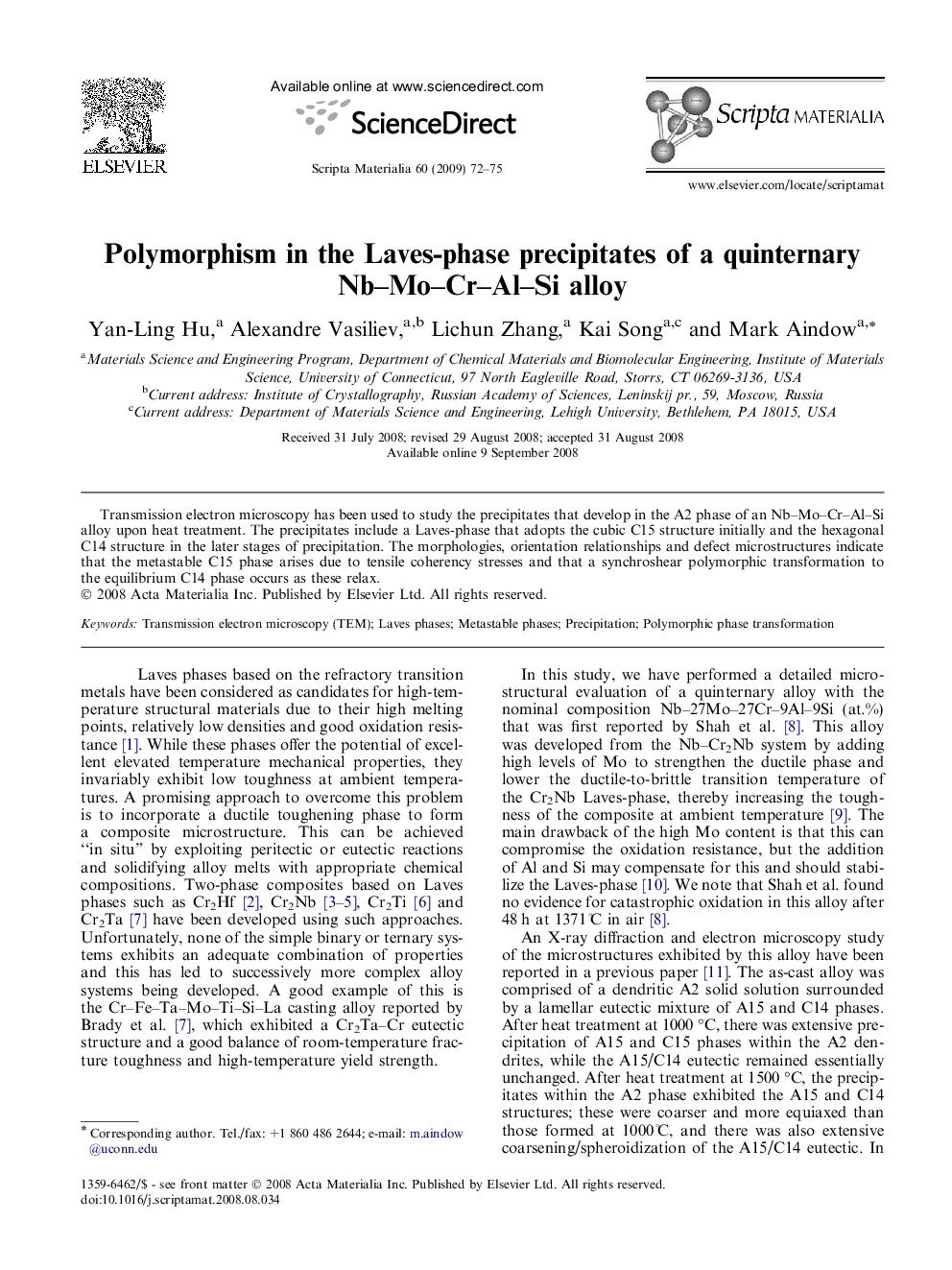| Article ID | Journal | Published Year | Pages | File Type |
|---|---|---|---|---|
| 1501984 | Scripta Materialia | 2009 | 4 Pages |
Abstract
Transmission electron microscopy has been used to study the precipitates that develop in the A2 phase of an Nb–Mo–Cr–Al–Si alloy upon heat treatment. The precipitates include a Laves-phase that adopts the cubic C15 structure initially and the hexagonal C14 structure in the later stages of precipitation. The morphologies, orientation relationships and defect microstructures indicate that the metastable C15 phase arises due to tensile coherency stresses and that a synchroshear polymorphic transformation to the equilibrium C14 phase occurs as these relax.
Keywords
Related Topics
Physical Sciences and Engineering
Materials Science
Ceramics and Composites
Authors
Yan-Ling Hu, Alexandre Vasiliev, Lichun Zhang, Kai Song, Mark Aindow,
